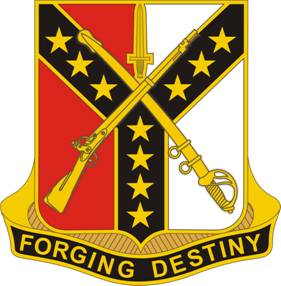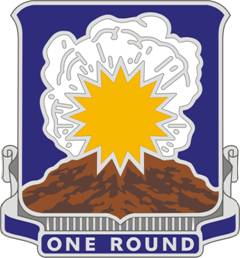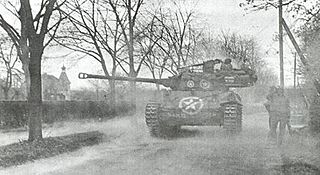| 605th Tank Destroyer Battalion | |
|---|---|
| Active | 16 December 1941 – 1946 |
| Disbanded | 1946 |
| Country | |
| Allegiance | |
| Part of | Independent unit |
| Equipment | 3" anti-tank guns |
| Engagements | |
The 605th Tank Destroyer Battalion was a tank destroyer battalion of the United States Army active during World War II.

The tank destroyer battalion was a type of unit used by the United States Army during World War II. The unit was organized in one of two different forms—a towed battalion equipped with anti-tank guns, or a mechanized battalion equipped with armored self-propelled guns. The tank destroyers were formed in response to the German use of massed formations of armored units early in WW2. The tank destroyer concept envisioned the battalions acting as independent units that would respond at high speed to enemy tank attacks. In this role they would be attached to divisions or corps. In practice, they were usually attached to infantry divisions. Over one hundred battalions were formed, of which more than half saw combat service. The force was disbanded shortly after the end of the war when the concept had been shown to be obsolete.

The United States Army (USA) is the land warfare service branch of the United States Armed Forces. It is one of the seven uniformed services of the United States, and is designated as the Army of the United States in the United States Constitution. As the oldest and most senior branch of the U.S. military in order of precedence, the modern U.S. Army has its roots in the Continental Army, which was formed to fight the American Revolutionary War (1775–1783)—before the United States of America was established as a country. After the Revolutionary War, the Congress of the Confederation created the United States Army on 3 June 1784 to replace the disbanded Continental Army. The United States Army considers itself descended from the Continental Army, and dates its institutional inception from the origin of that armed force in 1775.

World War II, also known as the Second World War, was a global war that lasted from 1939 to 1945. The vast majority of the world's countries—including all the great powers—eventually formed two opposing military alliances: the Allies and the Axis. A state of total war emerged, directly involving more than 100 million people from over 30 countries. The major participants threw their entire economic, industrial, and scientific capabilities behind the war effort, blurring the distinction between civilian and military resources. World War II was the deadliest conflict in human history, marked by 50 to 85 million fatalities, most of whom were civilians in the Soviet Union and China. It included massacres, the genocide of the Holocaust, strategic bombing, premeditated death from starvation and disease, and the only use of nuclear weapons in war.
Contents
The battalion was formed in March 1941 as the 5th Infantry Division Provisional Antitank Battalion, and on 16 December was redesignated as the 605th Tank Destroyer Battalion, in line with the reorganisation of the anti-tank force. It remained in the United States until 1944, when it was moved to the United Kingdom, deploying into Normandy in January 1945 equipped with towed 3" anti-tank guns.

The 5th Infantry Division (Mechanized)—nicknamed the "Red Diamond", the "Red Devils", or "die Roten Teufel"—was an infantry division of the United States Army that served in World War I, World War II and the Vietnam War, and with NATO and the U.S. Army III Corps. It was disbanded and deactivated on 24 November 1992.
It first saw action on 16 February, attached to the 102nd Infantry Division, then crossed the Roer on 24 February and pushed towards the Rhine. It deployed into the Remagen bridgehead on 12 March, and was pulled out on 17 March, to be sent north to support British forces in Belgium. However, it was promptly reattached to the 17th Airborne Division, crossing the Rhine on 25 March as part of Operation Varsity. In April they fought in the capture of the Ruhr Pocket, and crossed the Elbe on 1 May, near Lüneburg.

The 102nd Infantry Division ("Ozark") was a unit of the United States Army in World War II. The unit is currently active as the 102nd Training Division .

Operation Varsity was a successful airborne forces operation launched by Allied troops that took place toward the end of World War II. Involving more than 16,000 paratroopers and several thousand aircraft, it was the largest airborne operation in history to be conducted on a single day and in one location.

The Ruhr Pocket was a battle of encirclement that took place in April 1945, on the Western Front near the end of World War II, in the Ruhr Area of Germany. Some 317,000 German troops, consisting mostly of unarmed Volksturm militia and Hitlerjugend units were taken prisoner along with 24 generals. The Americans suffered 10,000 casualties including 2,000 killed or missing.







